Cause of death Cardiac arrest Name Tony Curtis Years active 1948–2010 | Occupation Actor Role Film actor | |
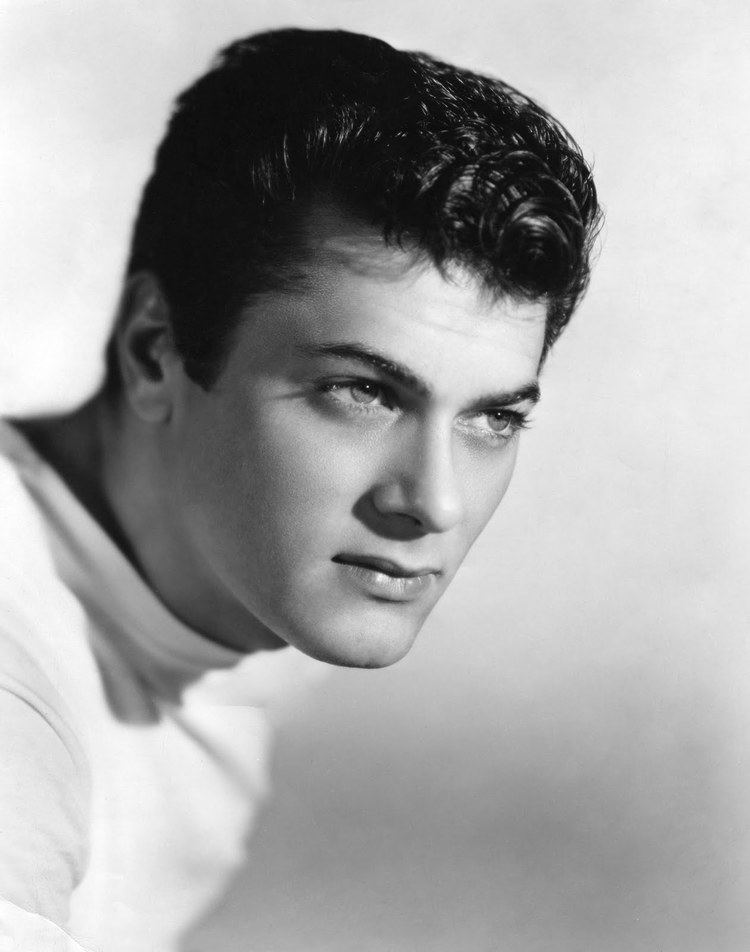 | ||
Full Name Bernard Schwartz Children Jamie Lee Curtis, Kelly Curtis, Allegra Curtis, Nicholas Curtis, Alexandra Curtis, Ben Curtis Spouse Jill Vandenberg Curtis (m. 1998–2010) Grandchildren Annie Guest, Thomas Guest, Raphael Curtis Movies and TV shows Similar People | ||
Tony Curtis (1925-2010) actor
TONY CURTIS TRIBUTE
Tony Curtis (born Bernard Schwartz; June 3, 1925 – September 29, 2010) was an American film actor whose career spanned six decades but who was mostly popular in the 1950s and early 1960s. He acted in more than 100 films in roles covering a wide range of genres, from light comedy to serious drama. In his later years, Curtis made numerous television appearances.
Contents
- Tony Curtis 1925 2010 actor
- TONY CURTIS TRIBUTE
- Early life
- War Service
- Career
- Universal as Anthony Curtis
- Stardom
- Major Star
- Focus on Comedy
- The Boston Strangler
- Later Career
- Painter
- Marriages and children
- Philanthropy
- Books and appearances
- Later years and death
- Box Office Ranking
- References
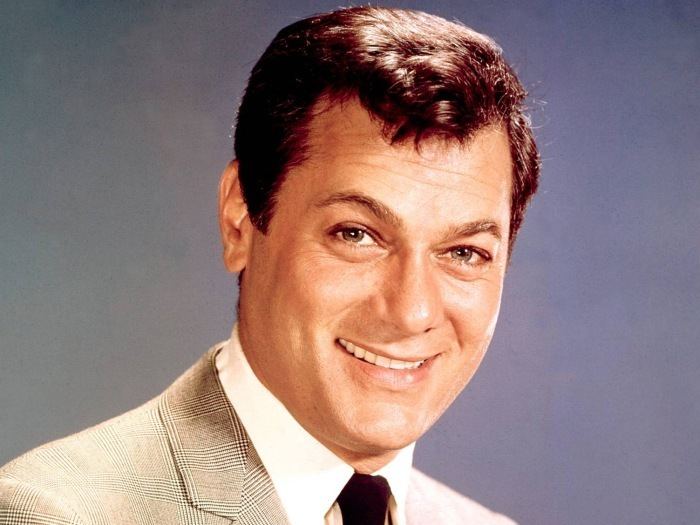
Although his early film roles were partly the result of his good looks, by the latter half of the 1950s he became a strong screen presence with the range to act in numerous dramatic and comedy roles. In his earliest parts he acted in a string of mediocre films, including swashbucklers, westerns, light comedies, sports films and a musical. However, by the time he starred in Houdini (1953) with his wife Janet Leigh, "his first clear success," notes critic David Thomson, his acting had progressed immensely.

He achieved his first serious recognition as a dramatic actor in Sweet Smell of Success (1957) with co-star Burt Lancaster. The following year he was nominated for an Oscar for Best Actor in The Defiant Ones (1958). Curtis then gave what could arguably be called his best performance: three interrelated roles in the comedy Some Like It Hot (1959). Thomson called it an "outrageous film," and a survey carried out by the American Film Institute voted it the funniest American film ever made. The film co-starred Jack Lemmon and Marilyn Monroe, and was directed by Billy Wilder. That was followed by Blake Edwards’s Operation Petticoat (1959) with Cary Grant. They were both frantic comedies, and displayed his impeccable comic timing. He often collaborated with Edwards on later films. In 1960, Curtis played a supporting role in Spartacus, which became another major hit for him.
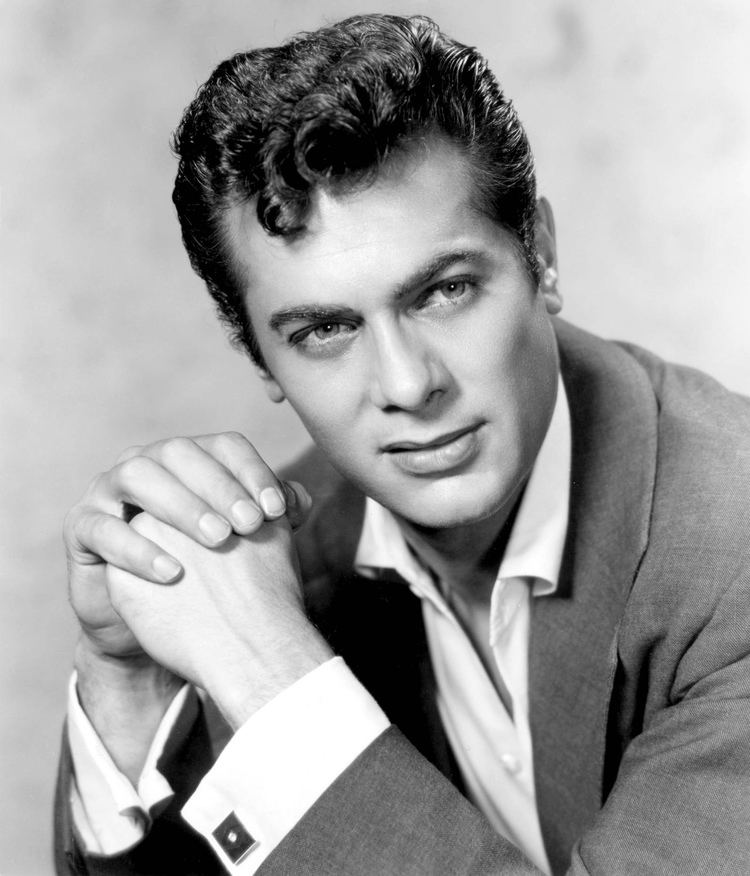
His stardom and film career declined considerably after 1960. His most significant dramatic part came in 1968 when he starred in the true-life drama The Boston Strangler, which some consider his last major film role. The part reinforced his reputation as a serious actor with his chilling portrayal of serial killer Albert DeSalvo.
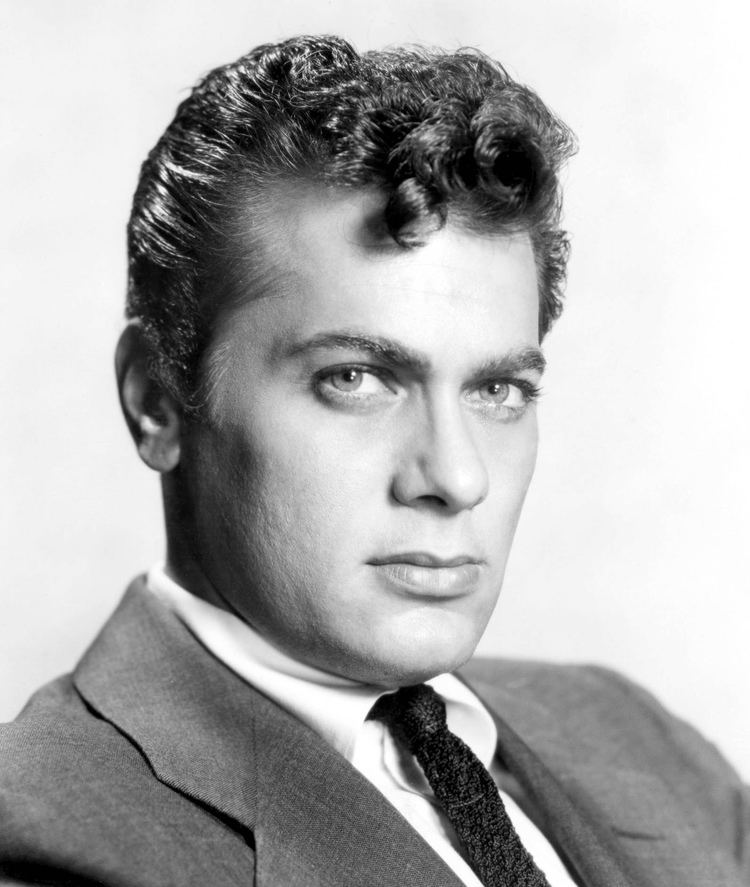
He later starred alongside Roger Moore in the ITC TV series The Persuaders!, with Curtis playing American millionaire Danny Wilde. However, the series was cancelled after twenty-four episodes.
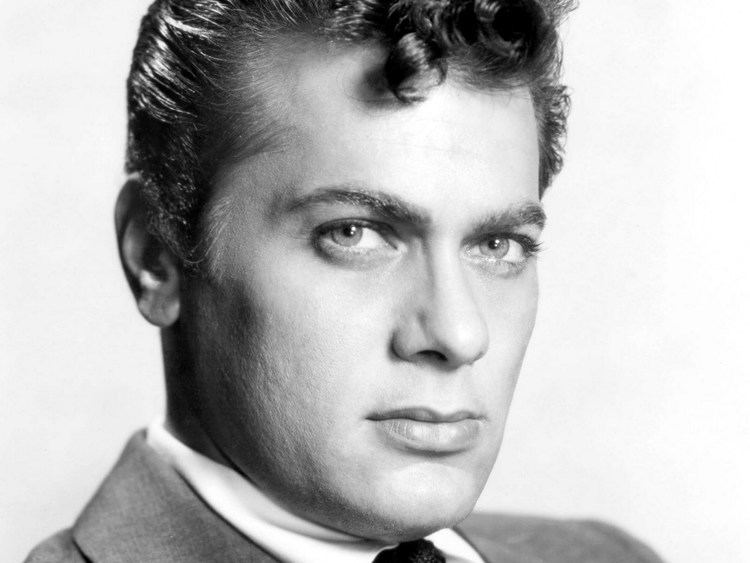
Curtis was the father of actresses Jamie Lee Curtis and Kelly Curtis by his first wife, actress Janet Leigh.
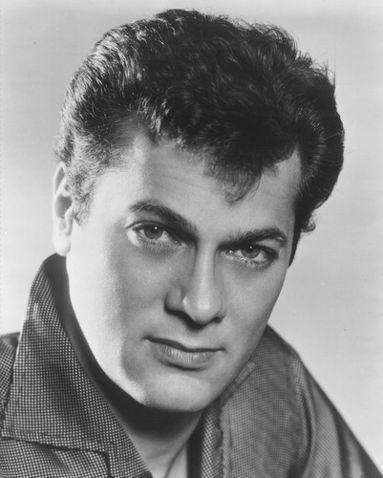
Early life

Tony Curtis was born Bernard Schwartz on June 3, 1925, in Manhattan, New York, to Helen (née Klein) and Emanuel Schwartz. Biographies have propagated a misconception that he was born in the Bronx, probably due to the family's moves when he was very young, but Tony pointedly corrected this in a TV interview. His parents were Jewish emigrants from Czechoslovakia and Hungary: his father was born in Ópályi, near Mátészalka, and his mother was a native of Nagymihály (now Michalovce, Slovakia); she later said she arrived in the US from Válykó (now Vaľkovo, Slovakia). He did not learn English until he was five or six, delaying his schooling. His father was a tailor and the family lived in the back of the shop—his parents in one corner and Curtis and his brothers Julius and Robert in another. His mother once made an appearance as a participant on the television show You Bet Your Life, hosted by Groucho Marx. Curtis said, "When I was a child, Mom beat me up and was very aggressive and antagonistic." His mother was later diagnosed with schizophrenia. His brother Robert was institutionalized with the same mental illness.
When Curtis was eight, he and his brother Julius were placed in an orphanage for a month because their parents could not afford to feed them. Four years later, Julius was struck and killed by a truck. Curtis joined a neighborhood gang whose main crimes were playing hooky from school and minor pilfering at the local dime store. When Curtis was 11, a friendly neighbor saved him from what he felt would have led to a life of delinquency by sending him to a Boy Scout camp, where he was able to work off his energy and settle down. He attended Seward Park High School. At 16, he had his first small acting part in a school stage play.
War Service
Curtis enlisted in the United States Navy after the attack on Pearl Harbor and war was declared. Inspired by Cary Grant's role in Destination Tokyo and Tyrone Power's in Crash Dive (1943), he joined the Pacific submarine force. Curtis served aboard a submarine tender, the USS Proteus, until the end of the Second World War. On September 2, 1945, Curtis witnessed the Japanese surrender in Tokyo Bay from his ship's signal bridge about a mile away.
Following his discharge from the Navy, Curtis attended City College of New York on the G.I. Bill. He then studied acting at The New School in Greenwich Village under the influential German stage director Erwin Piscator. His contemporaries included Elaine Stritch, Harry Belafonte, Walter Matthau, Beatrice Arthur, and Rod Steiger. While still at college, Curtis was discovered by Joyce Selznick, the notable talent agent, casting director, and niece of film producer David O. Selznick.
Career
In 1948, Curtis arrived in Hollywood at age 23.
Universal as "Anthony Curtis"
When he was placed under contract at Universal Pictures, he changed his name from Bernard Schwartz to Tony Curtis. It is also the same studio where he met unknown actors Rock Hudson, Julie Adams and Piper Laurie. The first name was from the novel Anthony Adverse and "Curtis" was from Kurtz. a surname in his mother's family. Although Universal Pictures taught him fencing and riding, in keeping with the cinematic themes of the era, Curtis admitted he was at first interested only in girls and money. Neither was he hopeful of his chances of becoming a major star. Curtis's biggest fear was having to return home to the Bronx as a failure:
I was a million-to-one shot, the least likely to succeed. I wasn't low man on the totem pole, I was under the totem pole, in a sewer, tied to a sack.
Curtis's uncredited screen debut came in Criss Cross (1949) playing a rumba dancer, dancing with Yvonne de Carlo. The male star was Burt Lancaster who would make a number of films with Curtis.
In his second film, City Across the River (also in 1949), he was credited as "Anthony Curtis". He had four lines in The Lady Gambles (1949) and a bigger part in Johnny Stool Pigeon (1949). He could also be spotted in Francis (1950), Woman in Hiding (1950), and I Was a Shoplifter (1950).
He was in two Westerns, Sierra (1950), starring Audie Murphy, and Winchester '73 (1950), one of many names (including fellow Universal contractee, Rock Hudson). He supported Murphy in another Western, Kansas Raiders (1951), playing Kit Dalton; this time he was billed as "Tony Curtis".
Stardom
Curtis was receiving a lot of fan mail so Universal decided to give him the starring role in The Prince Who Was a Thief (1951), an Eastern swashbuckler with Piper Laurie. It was a hit at the box office and Curtis was now established.
He followed it with Flesh and Fury (1952), a boxing movie; No Room for the Groom (1952), a comedy with Laurie directed by Douglas Sirk; and Son of Ali Baba (1952), another "Eastern" with Laurie.
Curtis' career stepped up another notch when he teamed with then-wife Janet Leigh in Houdini (1953), where Curtis played the title role. His next movies were more "B" fare: All American (1953), as a footballer; Forbidden (1953), as a criminal; Beachhead (1954), a war film; Johnny Dark (1954), with Laurie, as a racing car driver; and The Black Shield of Falworth (1954), a medieval swashbuckler with Leigh. The box office performances of these films were solid, and Curtis was growing in popularity.
For a change of pace he did a musical, So This Is Paris (1955), then it was back to more typical fare: Six Bridges to Cross (1955), as a bank robber; The Purple Mask (1955), a swashbuckler; The Square Jungle (1955), a boxing film.
Major Star
Curtis graduated to more prestigious projects when he was cast in support of Burt Lancaster and Gina Lollobrigida in Trapeze (1956). It was one of the biggest hits of the year.
Curtis made a Western, The Rawhide Years (1957), was a gambler in Mister Cory (1957) and a cop in The Midnight Story (1957). Lancaster asked for him again, to play scheming press agent Sidney Falco in Sweet Smell of Success (1957), starring and co-produced by Lancaster. It was a box office disappointment but Curtis, for the first time in his years, received sensational reviews.
Another star-producer was interested in Curtis supporting him - Kirk Douglas for The Vikings (1958). Janet Leigh also starred and the resulting movie was a massive hit. Curtis then co-starred with Frank Sinatra and Natalie Wood in Kings Go Forth (1958), a war story. It was mildly popular but The Defiant Ones (1958), was a big success. Curtis gave an Oscar-nominated performance as a bigoted white escaped convict chained to a black man, Sidney Poitier.
Curtis and Leigh made a popular comedy for Blake Edwards at Universal, The Perfect Furlough (1958). He co-starred with Jack Lemmon and Marilyn Monroe in Billy Wilder's Some Like It Hot (1959). It was a huge success, as was Operation Petticoat (1959), a military comedy which Curtis made for Edwards alongside Cary Grant.
Curtis and Leigh made one more film together Who Was That Lady? (1960), a comedy with Dean Martin. He and Debbie Reynolds then starred in the romantic comedy The Rat Race (1960).
Douglas came calling again, offering Curtis a key role in the former's epic production Spartacus (1960). It was a huge hit and earned Curtis a Golden Globe nomination.
Curtis then made his first movies in a while without a significant "name" co star. Both were biopics: The Great Impostor (1961), directed by Robert Mulligan, playing Ferdinand Waldo Demara; and The Outsider (1961), where he played war hero Ira Hayes. He went back to epics with Taras Bulba (1962), co starring Yul Brynner and Christine Kaufmann, who soon became Curtis' second wife.
Focus on Comedy
He and Kaufmann were reunited on the comedy 40 Pounds of Trouble (1962), which was a mild hit.
Curtis was one of many stars who had small roles in The List of Adrian Messenger (1963). He supported Gregory Peck in Captain Newman, M.D. (1963) and made a cameo in Paris When It Sizzles (1964). He and Kaufman made their third movie together, the comedy Wild and Wonderful (1964). His focus remained on comedies: Goodbye Charlie (1964), with Debbie Reynolds; Sex and the Single Girl (1964), with Natalie Wood; The Great Race (1965), with Wood and Lemmon for Blake Edwards - the most expensive comedy film up til that time but popular; Boeing Boeing (1965) a sex farce with Jerry Lewis; Not with My Wife, You Don't! (1966) with George C. Scott; Drop Dead Darling (1966), a British comedy; Don't Make Waves (1967), a satire of beach life from director Alexander Mackendrick, with Claudia Cardinale; and On My Way to the Crusades, I Met a Girl Who... (1967), an Italian comedy with Monica Vitti. In the early 1960s, he was a voice-over guest star on The Flintstones as "Stoney Curtis".
The Boston Strangler
Curtis made his first dramatic film for a number of years with The Boston Strangler (1968) playing the title role and response from the critics and public was excellent. He returned to comedy for Monte Carlo or Bust! (1969), an all-star car race film in the vein of The Great Race.
He made some comic adventure tales: You Can't Win 'Em All (1970) with Charles Bronson and Suppose They Gave a War and Nobody Came (1970).
Curtis decided it was time to turn to television and co-starred with Roger Moore in the TV series The Persuaders!.
He was one of the villains in The Count of Monte Cristo (1975) and had the title role in the gangster film Lepke (1975). Curtis had the lead in a TV series that did not last, McCoy (1975-76). He was one of many names in The Last Tycoon (1976) and had the title role in an Italian comedy Casanova & Co. (1977). Later, he co-starred and Vega$ and was in The Users (1978).
Later Career
Curtis supported Mae West in Sextette (1978) and starred in The Manitou (1978), a horror film and The Bad News Bears Go to Japan (1978), a comedy. He had good roles in It Rained All Night the Day I Left (1980), Little Miss Marker (1980) and The Scarlett O'Hara War (1980) and was one of many stars in The Mirror Crack'd (1980).
Painter
Throughout his life, Curtis enjoyed painting and, since the early 1980s, painted as a second career. His work commands more than $25,000 a canvas now. In the last years of his life, he concentrated on painting rather than movies. A surrealist, Curtis claimed "Van Gogh, [Paul] Matisse, Picasso, Magritte" as influences. "I still make movies but I'm not that interested in them any more. But I paint all the time." In 2007, his painting The Red Table was on display in the Metropolitan Museum of Art in New York City. His paintings can also be seen at the Tony Vanderploeg Gallery in Carmel, California.
Curtis spoke of his disappointment at never being awarded an Oscar. In March 2006, Curtis received the Sony Ericsson Empire Lifetime Achievement Award. He also has a star on the Hollywood Walk of Fame, and received the Ordre des Arts et des Lettres from France in 1995.
Marriages and children
Curtis was married six times. His first wife was actress Janet Leigh, to whom he was married from 1951 to 1962, and with whom he fathered actresses Kelly and Jamie Lee. "For a while, we were Hollywood's golden couple," he said. "I was very dedicated and devoted to Janet, and on top of my trade, but in her eyes that goldenness started to wear off. I realized that whatever I was, I wasn't enough for Janet. That hurt me a lot and broke my heart."
The studio he was under contract with, Universal-International, generally stayed out of their stars' love lives. However, when they chose to get married, studio executives spent three days trying to talk him out of it, telling him he would be "poisoning himself at the box office." They threatened "banishment" back to the Bronx and the end of his budding career. In response, Curtis and Leigh decided to defy the studio heads and instead eloped and were married by a local judge in Greenwich, Connecticut. Comedian and close friend Jerry Lewis was present as a witness.
The couple divorced in 1962, and the following year Curtis married Christine Kaufmann, the 18-year-old German co-star of his latest film, Taras Bulba. He stated that his marriage with Leigh had effectively ended "a year earlier". Curtis and Kaufmann had two daughters, Alexandra (born July 19, 1964) and Allegra (born July 11, 1966). They divorced in 1968. Kaufmann resumed her career, which she had interrupted during her marriage.
Curtis was also married to:
His last wife was 45 years his junior. They met in a restaurant in 1993 and married in 1998. "The age gap doesn't bother us. We laugh a lot. My body is functioning and everything is good. She's the sexiest woman I've ever known. We don't think about time. I don't use Viagra either. There are 50 ways to please your lover."
His son Nicholas (December 31, 1970 – April 2, 1994, with Leslie Allen) died of a heroin overdose at the age of 23. After his son's death, Curtis remarked, "You never get over that. The death of a child. No. Can't talk about it," and that it was "a terrible thing when a father loses his son."
According to the Pittsburgh Post-Gazette, Curtis, who had a problem with alcoholism and drug abuse, went through the treatment center of the Betty Ford Clinic in the mid-1980s, which was successful for him.
Philanthropy
Beginning in 1990, Curtis and his daughter Jamie Lee Curtis took a renewed interest in their family's Hungarian Jewish heritage, and helped finance the rebuilding of the "Great Synagogue" in Budapest, Hungary. The largest synagogue in Europe today, it was originally built in 1859 and suffered damage during World War II. In 1998, he also founded the Emanuel Foundation for Hungarian Culture, and served as honorary chairman. The organization works for the restoration and preservation of synagogues and 1300 Jewish cemeteries in Hungary. He dedicated this to the 600,000 Jewish victims of the Holocaust in Hungary and lands occupied by the Hungarian Army. He also helped promote Hungary's national image in commercials.
Books and appearances
In 1965, Tony Curtis was animated in an episode of The Flintstones; he also voiced his character Stoney Curtis. In 1994, a mural featuring his likeness, painted by the artist George Sportelli, was unveiled on the Sunset Boulevard overpass of the Hollywood Freeway Highway 101 in California. The mural was relocated to Hollywood Boulevard and Bronson Avenue in September 2011.
Also in 1994, the U.S. Navy Memorial Foundation awarded its Lone Sailor Award for his naval service and his subsequent acting career.
In 2004, he was inducted into the University of Nevada, Las Vegas Hall of Fame. A street is named after him in the Sun City Anthem development in Henderson, Nevada.
In 2008, he was featured in the documentary The Jill & Tony Curtis Story about his efforts with his wife to rescue horses from slaughterhouses.
In October 2008, Curtis's autobiography American Prince: A Memoir, was published. In it, he describes his encounters with other Hollywood legends of the time including Frank Sinatra and James Dean, as well as his hard-knock childhood and path to success. It was followed by the publication of his next book, The Making of Some Like it Hot: My Memories of Marilyn Monroe and the Classic American Movie (2009). Curtis shared his memories of the making of the movie, in particular about Marilyn Monroe, whose antics and attitude on the set made everyone miserable.
On May 22, 2009, Curtis apologized to the BBC radio audience after he used three profanities in a six-minute interview with BBC presenter William Crawley. The presenter also apologized to the audience for Curtis's "Hollywood realism." Curtis explained that he thought the interview was being taped, when it was in fact live.
Later years and death
Curtis was a lifelong Democrat and attended the 1960 Democratic National Convention alongside such liberal performers as Edward G. Robinson, Shelley Winters, Ralph Bellamy, and Lee Marvin.
Curtis developed a heavy cocaine addiction in 1974 while filming Lepke, at a time when his stardom had declined considerably and he was being offered few film roles. In 1984, Curtis was rushed to the hospital suffering from advanced cirrhosis as a result of his alcoholism and cocaine addiction. He then entered the Betty Ford Clinic and vowed to overcome his various illnesses. He underwent heart bypass surgery in 1994, after suffering a heart attack.
Curtis nearly died when he contracted pneumonia in December 2006 and was in a coma for more than a month. As a result, he used a wheelchair afterwards and could walk only short distances.
On July 8, 2010, Curtis, who suffered from chronic obstructive pulmonary disease (COPD), was hospitalized in Las Vegas after suffering an asthma attack during a book-signing engagement in Henderson, Nevada, where he lived.
Curtis died at his Henderson home on September 29, 2010, of cardiac arrest. He left behind five children and seven grandchildren. His widow Jill told the press that Curtis had suffered from various lung problems for years as a result of cigarette smoking, although he had quit smoking about 30 years earlier. In fact, during the 1960s Curtis served as the president of the American 'I Quit Smoking' Club. In a release to the Associated Press, his daughter, actress Jamie Lee Curtis, stated:
My father leaves behind a legacy of great performances in movies and in his paintings and assemblages. He leaves behind children and their families who loved him and respected him and a wife and in-laws who were devoted to him. He also leaves behind fans all over the world. He will be greatly missed.
His remains were interred at Palm Memorial Park Cemetery in Henderson, Nevada, on October 4, 2010. His memorial service was attended by his daughters, Jamie Lee Curtis and Kelly Curtis; Arnold Schwarzenegger; Rich Little; and Vera Goulet, Robert Goulet's widow. Investor Kirk Kerkorian, actor Kirk Douglas and singer Phyllis McGuire were among the honorary pallbearers.
Box Office Ranking
For a number of years Curtis was voted by exhibitors in an annual poll from Quigley Publishing as among the top stars in the US:
